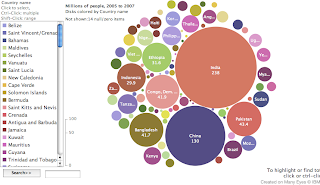
India has long been known in the West as home of the snake charmers and rope tricksters. Now it will be more famous for one of its most modern and much admired modern institutions turning out Voodoo justice – an amalgam of law and faith impacting the judgments given out by the 3 judge bench of a High Court, all with their version of how Indian law should be interpreted. The Ayodhaya Verdict will go down in history as one of the finest example of an old tradition-steeped country trying to wear the garb of a new nation without realizing its slip is showing. In fact, the Emperor wears no clothes.
For one of contestant of the title suit of the Babri Masjid property, the Muslims, it is a mockery of justice as per the long traditions of legal and judiciary system introduced by Colonial British in India two hundred years back and now very much entrenched in its polity. The Hindutva version of justice takes Indian justice to another two thousand back, even prior to any sharia laws of Muslim era, and the verdict seems to be forerunner of how ‘Vedic’ ( term used for lack of any other suitable Hindu term: with apologies), in contrast to Islamic Sharia, laws may be changing the entire ethos of Indian polity.
While Pandit Nehru, a high-caste Kashmiri Brahmin, thanks to his exposure to Fabian culture that was in fashion when he studied in Great Britain, tried to position the newly independent India into a gradual slide into the modern world, by introducing ‘secularism’ as India’s constitutional creed, he was so overwhelmingly and suffocatingly surrounded by hard-line Brahmins, even in his own Congress Party, that it is a miracle that the façade of secularism is still in vogue in India and the Hindutva hardliners too have eventually found shelter in secularism’s benign shadows.
The shameless display of triumphalism shown by Saffron Brahmins, while spewing high moral slogans of unity and integrity in Indian society, is ample example of how the fascists have completely taken over the entire country, lock, stock and court hammer. The only alternative for the rest of the people, who are decidedly non-Brahmins, is to size up the danger of Brahmin conspiracies and boycott all Brahmin political groupings, including Congress and BJP. Muslims should vote even for a ‘kala chor’ (black thief in local parlance) rather than vote for Congress. They can hardly ignore how the earliest comments by a Congress leader, Chaturvedi, (a Brahmin), on a TV channel, came out applauding the verdict as facilitating a new phase of unity and integration among communities; apparently on Brahmin terms.
150 million Indian Muslims (15% of Indian population) should realize that India is as much their country, as it is of 30 million (3% Indian population) Brahmins and if they want to regain their stakes in their own country, they will have to reorganize and play the game by the rules of the game that is now being promulgated by the Brahmins, till the time the Brahmins are sidelined. And decidedly that is not a tall order, as far as US is posing as friend of India.
Ghulam Muhammed, Mumbai



